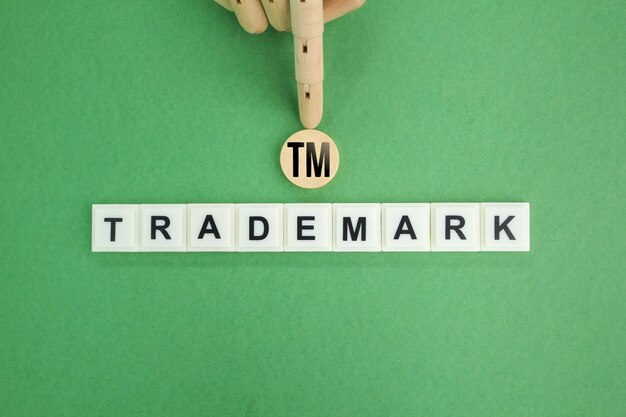Trademarks are essential for building and protecting a brand. They’re not just logos or names; they help people recognise and trust your brand over time.

This guide will cover everything you need to know about trademarks—what they are, the types, the registration process, and how they protect your brand.
What is a Trademark?
A trademark is a unique symbol, word, phrase, design, or combination that represents your brand. It’s what sets your products or services apart from others. Think of famous logos or taglines—these are trademarks. When someone sees them, they instantly know the brand they belong to. Trademarks are valuable because they help prevent others from copying or misusing your brand.
What’s the Purpose of a Trademark?
Trademarks serve two main purposes:
- They identify and differentiate your brand from others.
- They protect your brand by ensuring only you can use it for your goods or services.
Whether it’s a company name, a logo, or a tagline, a trademark can make your brand instantly recognisable and prevent confusion in the marketplace. For example, when people see the swoosh logo, they know it’s Nike, which builds trust and brand loyalty.
Types of Trademarks
There are several types of trademarks, each used differently:
- Word Marks: Protects brand names or words (e.g., “Google”).
- Logos or Device Marks: Protects images or designs associated with your brand (e.g., the Starbucks mermaid logo).
- Slogans: Short, catchy phrases that express brand identity (e.g., Nike’s “Just Do It”).
- Colour Marks: Protects specific colours that represent your brand (like Tiffany & Co.’s blue).
Additional types include Service Marks (for services rather than products), Collective Marks (for associations), and Certification Marks (indicating quality standards). Each type provides unique brand protection based on how your brand is represented.
Releated: What is Intellectual Property? | Intellectual Property Types
Why Register a Trademark?
Other categories include Service Marks, which identify services rather than products, Collective Marks for associations, and Certification Marks, indicating standards or quality. These types offer various ways to protect your brand identity in the market.
Looking for Trademark Protection Services in Delhi?
The Importance of Trademark Registration
Registering a trademark provides significant advantages, such as:
- Exclusive Rights: Only you have the right to use the mark in your industry.
- Legal Protection: You can take legal action against anyone using your mark without permission.
- Brand Value: A registered trademark adds value to your brand, especially if you plan to expand or sell your business.
Registering a trademark might seem complex, but it’s worth the effort to secure your brand’s future. Many businesses work with intellectual property experts to ensure a smooth registration process.
Trademark Symbols and How to Use Them
You may have seen ™, ®, and SM symbols next to logos or brand names. Here’s what they mean:
- ™ (Trademark): This symbol is used for unregistered trademarks, letting others know you claim ownership.
- ® (Registered Trademark): This can only be used after your trademark is registered, providing full legal protection.
- SM (Service Mark): This is similar to ™ but specifically for services.
Using these symbols correctly shows that your brand is protected and discourages misuse by others.
How Trademark Laws Protect Your Brand
Trademark laws exist to prevent brand misuse and help businesses protect their identities. In the India, trademarks are overseen by the Intellectual Property Office (IPO), which manages registration, disputes, and protection. If someone uses a mark similar to yours and causes confusion, this is known as trademark infringement. In these cases, trademark laws enable you to take action to stop them.
Trademark infringement, which occurs when someone uses a mark similar enough to cause confusion, can be addressed through legal action. In these cases, IP lawyers can help you understand your rights and pursue necessary actions.
Looking for Trademark Protection Services?
The Trademark Application Process: Steps and Requirements
To register a trademark, you typically need to follow these steps:
- Conduct a Trademark Search: Ensure your chosen mark isn’t already in use.
- Submit Your Application: Provide required documents, descriptions, and design samples.
- Examination and Publication: The application is examined and published for public feedback.
- Approval and Registration: If no objections arise, the mark is registered.
The process may take a few months, but once registered, your trademark is protected. Many companies seek help from IP experts to avoid common mistakes.
What is a Common Trademark Mistakes to Avoid?
While applying for a trademark, businesses often make mistakes, such as:
- Choosing Generic Names: Names that describe the product (like “Soft” for a fabric) often don’t qualify as trademarks.
- Skipping a Trademark Search: Failing to search could lead to legal issues if your mark is similar to another.
- Improper Use of Symbols: Using ® before registration can lead to legal issues, so only use it after your mark is registered.
Avoiding these mistakes helps ensure that your trademark application is successful and fully protects your brand.
FAQs About Trademarks
A trademark is a unique symbol, word, or design that identifies and sets apart a business’s products or services. It’s a vital part of brand identity, helping consumers recognise a company’s offerings. Registered trademarks provide exclusive rights, allowing businesses to protect their brand and prevent others from using similar marks that could cause confusion.
Most trademarks can last indefinitely, as long as they’re renewed every 10 years.
Yes, trademarks can be renewed indefinitely if they are still used in business and the renewal fees are paid.
If someone uses a mark similar to yours, you can contact an intellectual property lawyer who can help you issue a cease-and-desist letter or file a legal claim.
A trademark protects brand names and logos, while copyright protects original creative works, l
